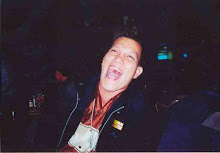
but others believe the face is Christ's.
The Pope will see for himself.. .
THE brown hair is shoulder-length and a narrow, straggly beard covers the lower part of the oval, asymmetric face. There is a hint of a moustache. A tuft sprouts at the centre of the hairline.
Bruises are visible on either side of the nose and there appears to be other damage to the forehead and an eyebrow. Slightly open lips reveal the teeth, and the eyes are open. The face's biscuity colouring and expression change according to the light thrown on them.
Jesus Christ?
The face certainly makes an impression as you look at it - young, battered - at a church in the foothills of the Abruzzo mountains in Italy. The face, on a piece of fabric measuring 24 centimetres by 17 centimetres, is preserved in a reliquary above and behind the main altar of a church in Manoppello. The town of 5000 is in the foothills of the majestic Maiella massif near the Adriatic coast.
It's a face set to spark more controversy if, as scheduled, Pope Benedict XVI visits the site on Friday.
IN 1991 a German Jesuit art historian from the Gregorian University in Rome, Father Heinrich Pfeiffer, made the startling claim that the image, called "the Holy Face" locally, was Veronica's Veil.
Veronica's Veil was the major drawcard when the first Jubilee, or Holy Year, was held in Rome in 1300, attracting an estimated 2 million pilgrims. It was of huge importance to believers because they considered it the "vera icona", or true image, of Christ.
The words "vera icona" were melded into "Veronica" and a legend grew that a compassionate woman had offered a cloth to Jesus Christ to wipe sweat and blood from his face when he fell while carrying his cross to Mount Calvary. On receiving the cloth back from him, she found his image on it.
There is no mention of such a woman in the Gospels, but John, in Chapter 20, talks of a cloth which had been over Christ's face in the tomb: "Simon Peter … went right into the tomb, saw the linen cloths on the ground and also the cloth that had been over his head: this was not with the linen cloths but rolled up in a place by itself."
If the Manoppello image is superimposed on that of the Shroud of Turin they coincide, although the Turin face is strained, with closed eyes, while the Manoppello face seems to be waking, with eyes open and upturned. The hypothesis is that the release of energy at the resurrection somehow imprinted the image.
But wasn't the Turin shroud discounted after carbon dating showed the fabric was from later than the time of Christ?



No comments:
Post a Comment